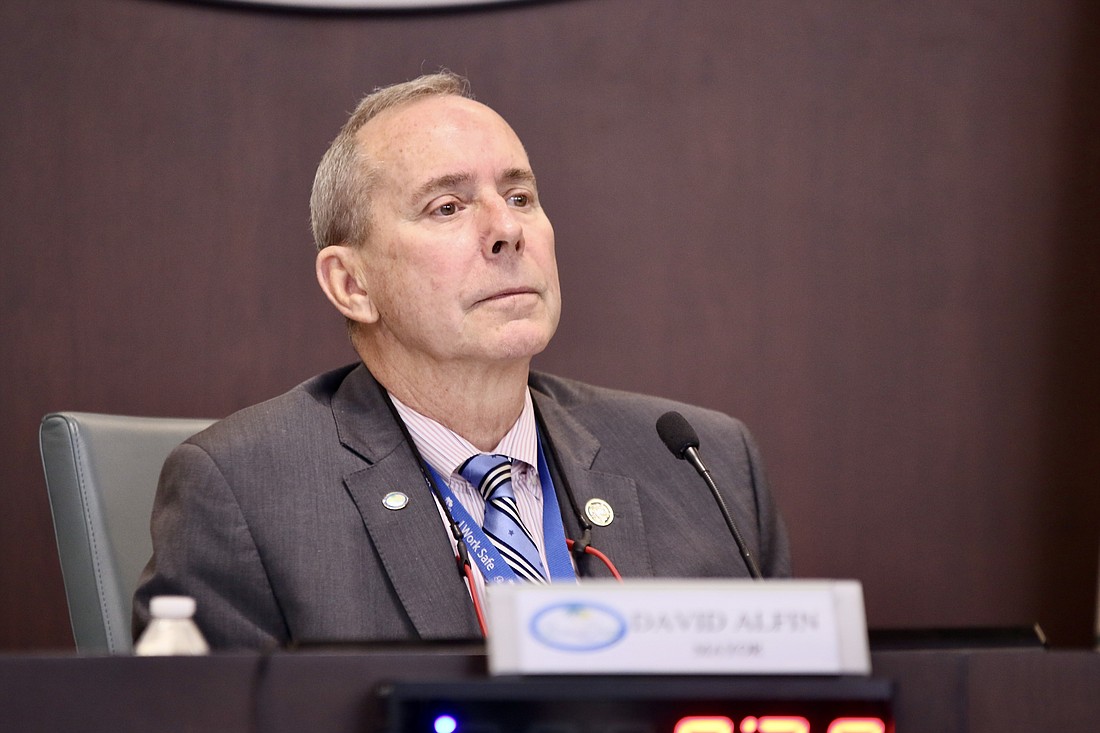- January 10, 2025
-
-
Loading

Loading

Palm Coast’s property tax rate is on par with that of other cities of its size, according to the city’s director of Financial Services.
Director Helena Alves presented an overview of the city’s funds and their restrictions to the City Council at a May 23 workshop. Included in her presentation, at the council’s request, was a comparison of millage rates in comparable cities across Florida.
The data broke down each city’s revenue streams, including ad valorem tax, by percentage. Palm Coast, with a population of 96,000, receives 10% of its income from ad valorem taxes.
Ormond Beach, half the size of Palm Coast, gets 14.5% of its revenue from ad valorem taxes. St. Augustine has a population of 15,000 people but gets 24% of its revenue from ad valorem taxes.
In Palm Coast, 34% of the city’s revenue comes from charges for services like wastewater and utilities, Alves said.
Alves also reviewed two so-far-unused options for unrestricted revenue sources: an electric franchise fee and a public service utility tax.
Both the electric fee and the utility tax could be added to Palm Coast residents’ Florida Power and Light and utility bills, respectively.
The revenue from these fees is unrestricted, meaning the City Council could use the money as it sees fit, Alves said.
The franchise fee has a maximum limit of 6%, but that would generate $5.75 million annually, Alves said.
The City Council last considered the franchise fee in 2018, but the council at the time objected to the 30-year length of the proposed contract, Mayor David Alfin said.
“Every city and every municipality and every county within shouting range of here has been using this for a long time and benefiting from it,” Alfin said. “But at the end of the day ... it’s a tax.”
While Vice Mayor Ed Danko said he would not support any new taxes, council member Theresa Carli Pontieri said the council should consider its options.
No one on the council wants to pass additional taxes, she said, but the revenue could help fund the city’s resurfacing program.
“We agreed as a council that it was important to diversify the types of monies we’re bringing in so we’re not so reliant on ad valorem taxes,” Pontieri said.
The effects of an increased population in Palm Coast are starting to show at the Parks and Recreation facilities.
Parks and Recreation Director James Hirst presented an overview of the city’s recreation facilities to the City Council at the workshop. Hirst said multiple facilities are seeing an increase in use, but there are built-in constraints like parking, the limited sizes of the facilities and aging equipment.
It’s a problem that many residents are already well aware of. Just three weeks ago, on May 2, youth football teams flooded a City Council meeting with complaints about the poor condition of Ralph Carter Park due to the hundreds of kids using it.
Parking is also a problem at Ralph Carter.
Hirst’s data supports the public’s claims. Ralph Carter Park is one of two public parks with lighting. In fiscal year 2021-2022, 98% of requested permits were for Ralph Carter and Indian Trails sports complex.
“It’s quite telling of the need for lighted fields in the community,” Hirst said.
Palm Harbor Golf Course, Hirst said, also needs more parking, as does the Palm Coast Community Center.
Hirst said the department is looking into expanding parking behind the old clubhouse on the golf course as a solution.
Mayor David Alfin said he wondered if the Community Center was poorly designed, given that the city’s projected population growth has been known since ITT began building.
The fact that the city has so quickly outgrown the Community Center, he said, places a burden on staff and the budget to create solutions.
“We need to be better at planning in the future,” Alfin said. “So I will put the pressure on us to be better planners for the future."